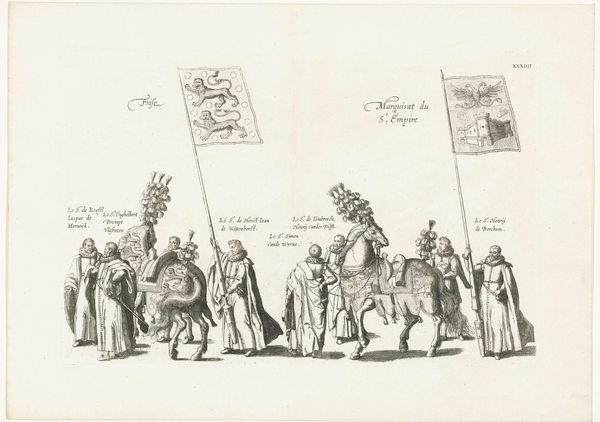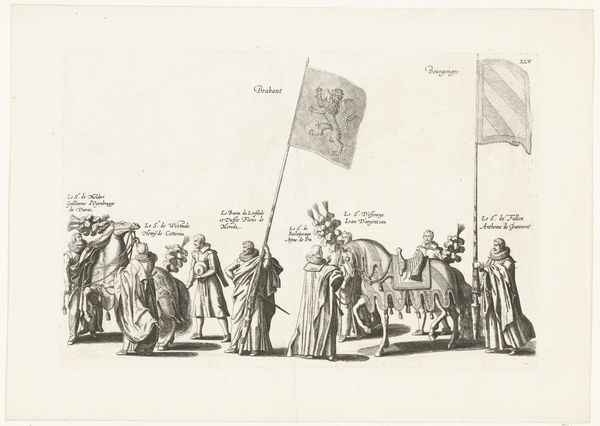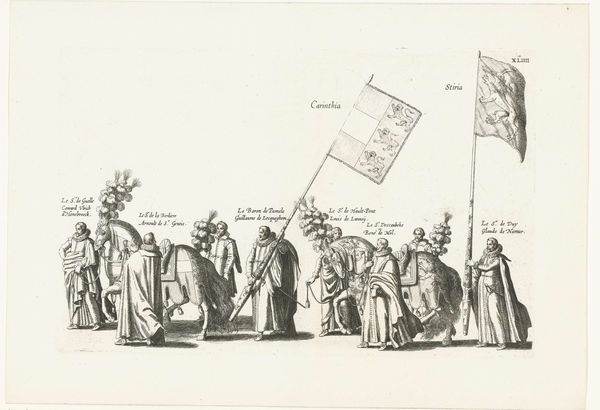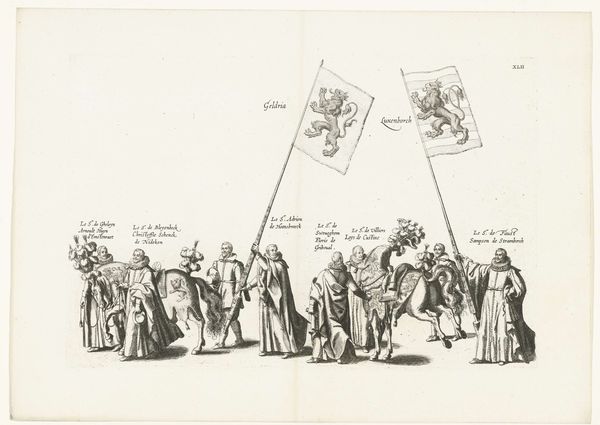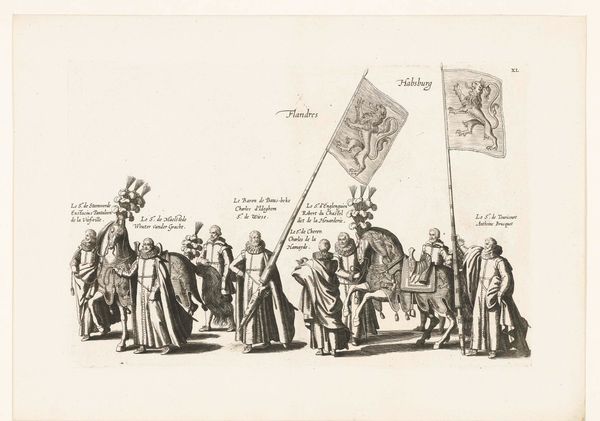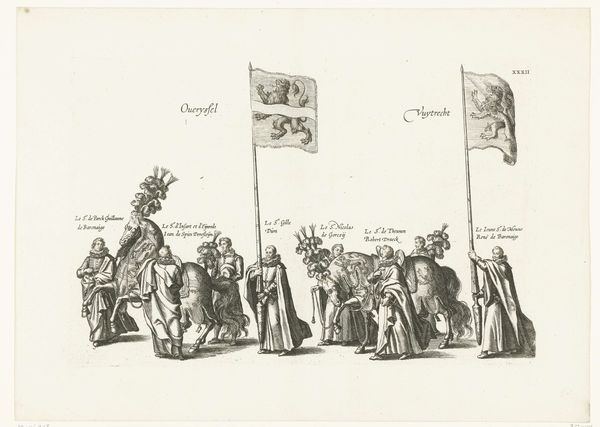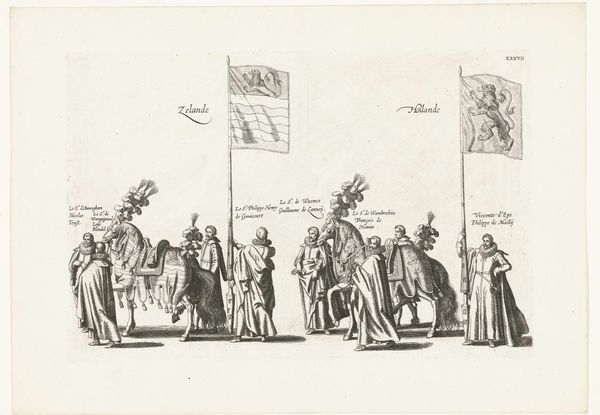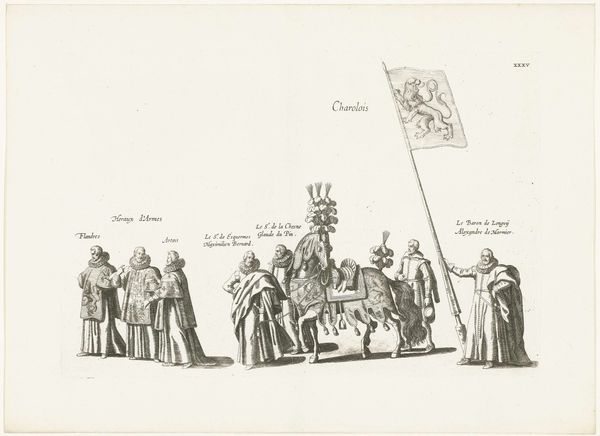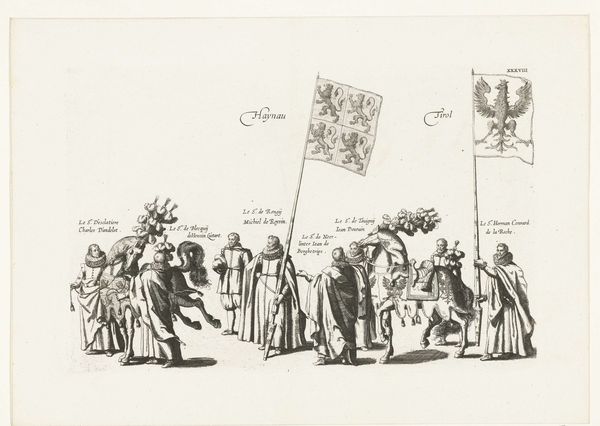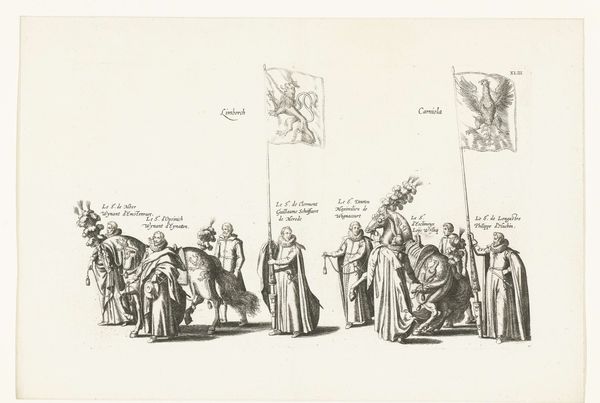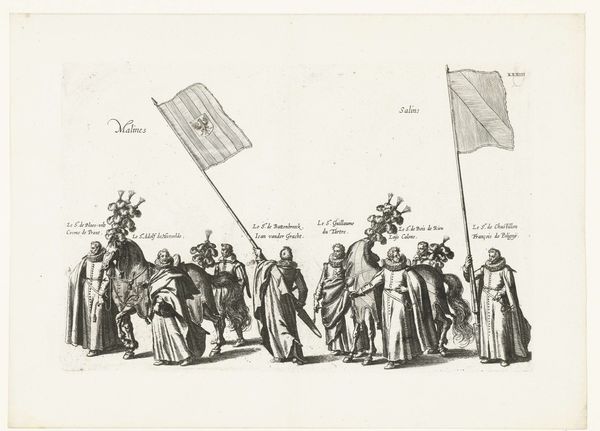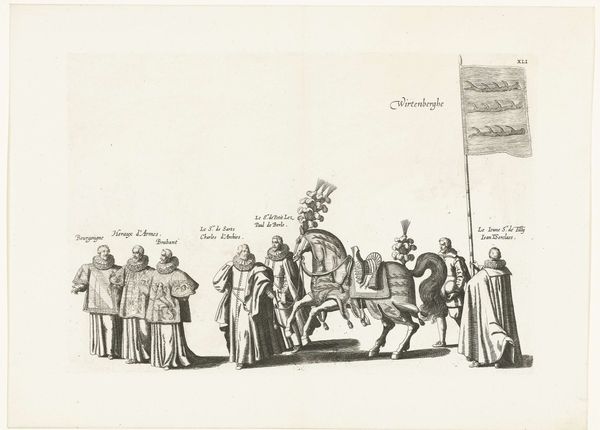
print, engraving
#
baroque
# print
#
figuration
#
genre-painting
#
history-painting
#
engraving
Dimensions: height 248 mm, width 378 mm
Copyright: Rijks Museum: Open Domain
This print, made in 1622 by Cornelis Galle I, depicts a portion of the funeral procession for Archduke Albrecht. It’s an engraving, meaning that the image was incised into a copper plate, inked, and then printed onto paper. What’s fascinating about prints is the indirect relationship between the artist’s hand and the final image. It takes immense skill and labor to produce a plate like this, using specialized tools to create a network of lines that render the scene. Each line must be carefully considered to create the illusion of depth, texture, and form. The resulting image, far from being a direct expression of the artist’s hand, is the product of a complex industrial process, one that could produce numerous copies. In this case, that reproductive capacity served to amplify the Archduke's power, even in death. The very material of the print—its lines and tones—speak to the social context of its making, and remind us that even seemingly simple images can be deeply enmeshed with politics and consumption.
Comments
No comments
Be the first to comment and join the conversation on the ultimate creative platform.
